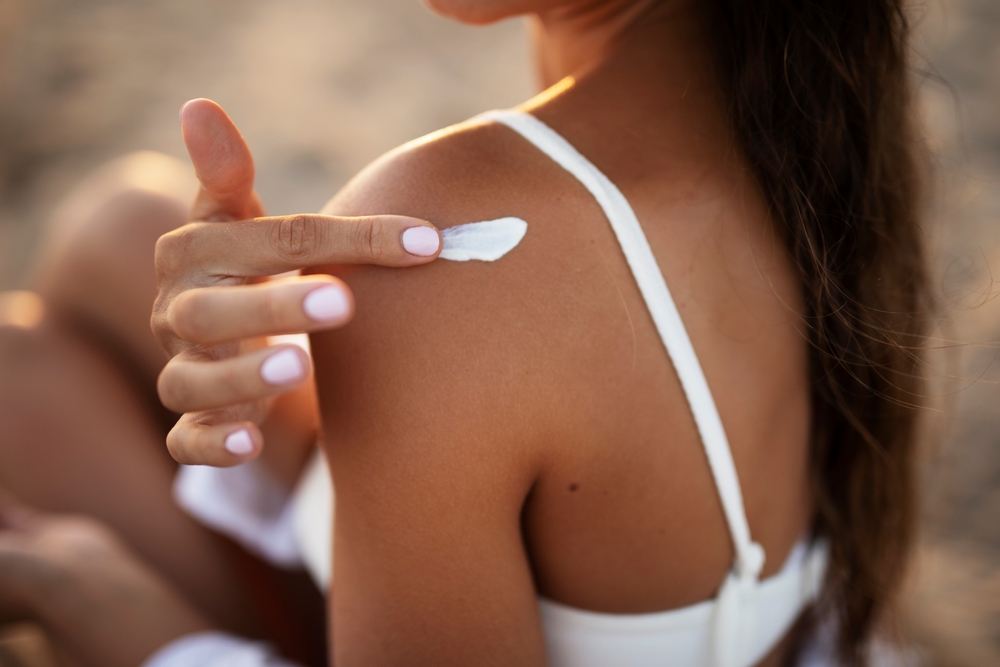5 Medications That Play With the Sun: Safeguard Your Skin from their Fury
Did you know sun-sensitive medications can amp up your sunburn risk? Here’s a round-up of 5 medications that don’t get along with the sun, and tips on how to keep your skin safe.
1. Antibiotics
Antibiotics, a class of medications crucial in combating infections, can induce photosensitivity, which is a chemically induced change in the skin that results in increased sensitivity to sunlight. This can cause sunburn-like symptoms, rashes, and other unwanted side effects. Certain antibiotics, such as ciprofloxacin, doxycycline, levofloxacin, ofloxacin, tetracycline, and trimethoprim, are known to cause sun sensitivity.
This sensitivity can be categorised into two types:
- Photoallergy, an allergic reaction of the skin that may not occur until several days after sun exposure
- Phototoxicity, an irritation of the skin that can occur within a few hours of sun exposure.
Both types of photosensitivity can occur after exposure to ultraviolet light, either from natural sunlight or artificial light sources like tanning booths.
2. Antihistamines
The utilisation of antihistamines, such as diphenhydramine, to alleviate allergy symptoms can increase sun sensitivity. Both newer antihistamines like loratadine (Claritin) and certain older ones like promethazine have been linked to sun sensitivity.
Promethazine, a prescription-only nausea medication, can even cause bodywide rashes appearing after sun exposure, and these rashes may persist for weeks or months after the cessation of the medication.
There have also been cases of patients developing antihistamine photodermatitis due to antihistamines like diphenhydramine and carbinoxamine. These patients showed both phototoxic and photoallergic reactions to various antihistamines on photopatch testing.
3. Anti-Acne Medications
Accutane (isotretinoin) and Retin-A (tretinoin), which are both common anti-acne medications, can increase the susceptibility of your skin to sunburn due to their photosensitising effects. This is a phenomenon known as drug-induced photosensitivity, where chemicals or drugs that are ingested orally or applied topically cause an overreaction of the skin to exposure to UV radiation from sunlight or a tanning bed. These medications, which are derivatives of vitamin A, stimulate skin cell turnover and promote the growth of new skin cells. By doing so, they remove or thin the protective barrier of the skin, making it more prone to sunburn.
4. Diuretics
The heightened skin sensitivity to sunlight caused by diuretics such as hydrochlorothiazide, which are often prescribed for hypertension, has been linked to an increased risk of skin cancer.
For individuals taking such medication, it is crucial to follow sun safety practices throughout the year, regardless of the weather, as sun exposure can lead to skin ageing, eye damage, and skin cancer, the most common form of cancer in the U.S. The FDA continues to evaluate sunscreen products for safety and effectiveness and recommends using broad spectrum sunscreens with an SPF of 15 or higher, in combination with other sun protection measures.
5. Nonsteroidal Anti-Inflammatory Drugs (NSAIDs)
NSAIDs such as ibuprofen and naproxen can heighten the skin’s sensitivity to sunlight and artificial ultraviolet light, potentially leading to an exaggerated sunburn or eczema-like red, itchy spots. This heightened sensitivity is a result of the combination of the drug and ultraviolet light, generating toxic and inflammatory reactions harmful to skin cells.
Sun-Smart is the New Smart: Protect Your Skin
Being informed and taking precautionary measures is key in protecting your skin while on sun-sensitive medications. Don your hat, lather that sunscreen, and stay in the shade to keep sunburn at bay.
Key Takeaways
- Limit your time in the sun, particularly between 10 a.m. and 2 p.m., when the sun’s rays are most intense
- Wear sun-protective clothing to cover skin exposed to the sun, such as long-sleeve shirts, pants, sunglasses, and broad-brim hats
- Use broad-spectrum sunscreens with an SPF value of 15 or higher regularly and as directed. These sunscreens offer protection against both UVA and UVB rays, two types of the sun’s ultraviolet radiation
- Apply sunscreen liberally to all uncovered skin, especially your nose, ears, neck, hands, feet, and lips (but avoid putting it inside your mouth and eyes)
- Reapply at least every two hours, and apply more often if you’re swimming or sweating
- If you don’t have much hair, apply sunscreen to the top of your head or wear a hat.
- Read the sunscreen label to ensure you use your sunscreen correctly
- Seek shade whenever possible, as no sunscreen completely blocks UV radiation
- Remember, always consult a healthcare professional before applying sunscreen to infants younger than 6 months, and if you’re taking medications like antihistamines, ask about sun-care precautions. Some medications may increase sun sensitivity
References
- The Sun and Your Medicine. (2015, September 25). The Sun and Your Medicine | FDA. https://www.fda.gov/drugs/special-features/sun-and-your-medicine
- Zellweger, R. M., Carrique-Mas, J., Limmathurotsakul, D., J Day, N. P., Thwaites, G. E., Baker, S., of the Southeast Asia Antimicrobial Resistance Network, O. B., the Southeast Asia Antimicrobial Resistance Network, M. O., Ashley, E., Balogh, K. D., Baird, K., Basnyat, B., Benigno, C., Bodhidatta, L., Chantratita, N., Cooper, B., Dance, D., Dhorda, M., Doorn, R. V., . . . Yang, H. L. (2017, November 1). A current perspective on antimicrobial resistance in Southeast Asia. OUP Academic. https://doi.org/10.1093/jac/dkx260
- SCHREIBER, M. M., & NAYLOR, L. Z. (1962, July 1). Antihistamine Photosensitivity. Antihistamine Photosensitivity | JAMA Dermatology | JAMA Network. https://doi.org/10.1001/archderm.1962.01590070064009
- Tips to Stay Safe in the Sun: From Sunscreen to Sunglasses. (2022, August 15). Tips to Stay Safe in the Sun: From Sunscreen to Sunglasses | FDA. https://www.fda.gov/consumers/consumer-updates/tips-stay-safe-sun-sunscreen-sunglasses
- Hydrochlorothiazide (Oral Route) Side Effects – Mayo Clinic. (n.d.). https://www.mayoclinic.org/drugs-supplements/hydrochlorothiazide-oral-route/side-effects/drg-20071841?p=1
- Yes, Medication Can Make Your Skin Sensitive to the Sun. (2023, March 17). Cleveland Clinic. https://health.clevelandclinic.org/medication-increasing-sun-sensitivity/
- Shi, H., Chen, X., Liu, X., Zhu, H., Yu, F., Lam Ung, C. O., Chan, W. S., Hu, H., & Han, S. (2021, May 25). National drug utilization trend of analgesics in China: an analysis of procurement data at 793 public hospitals from 2013 to 2018 – Journal of Pharmaceutical Policy and Practice. BioMed Central. https://doi.org/10.1186/s40545-021-00325-8












